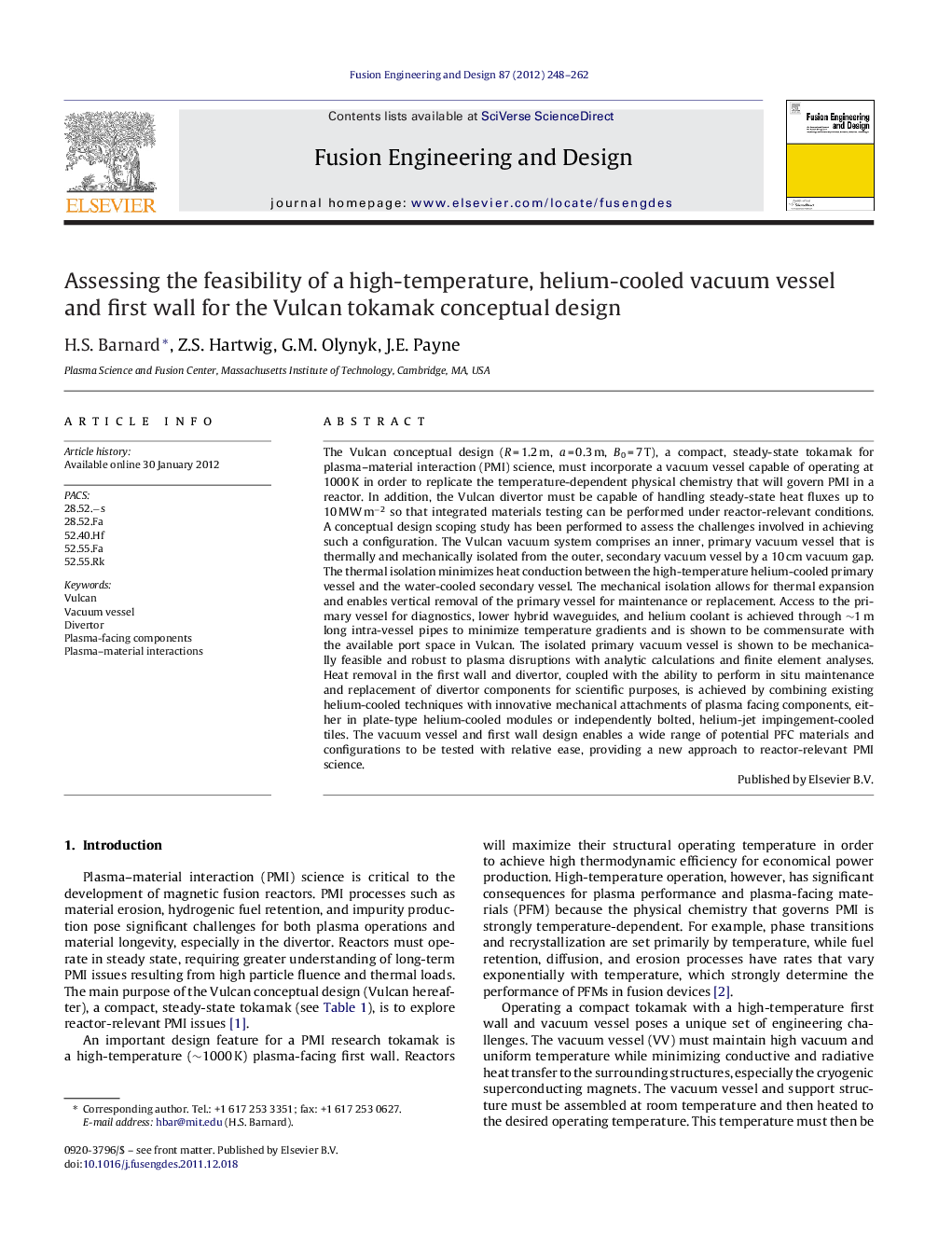| کد مقاله | کد نشریه | سال انتشار | مقاله انگلیسی | نسخه تمام متن |
|---|---|---|---|---|
| 272398 | 505020 | 2012 | 15 صفحه PDF | دانلود رایگان |

The Vulcan conceptual design (R = 1.2 m, a = 0.3 m, B0 = 7 T), a compact, steady-state tokamak for plasma–material interaction (PMI) science, must incorporate a vacuum vessel capable of operating at 1000 K in order to replicate the temperature-dependent physical chemistry that will govern PMI in a reactor. In addition, the Vulcan divertor must be capable of handling steady-state heat fluxes up to 10 MW m−2 so that integrated materials testing can be performed under reactor-relevant conditions. A conceptual design scoping study has been performed to assess the challenges involved in achieving such a configuration. The Vulcan vacuum system comprises an inner, primary vacuum vessel that is thermally and mechanically isolated from the outer, secondary vacuum vessel by a 10 cm vacuum gap. The thermal isolation minimizes heat conduction between the high-temperature helium-cooled primary vessel and the water-cooled secondary vessel. The mechanical isolation allows for thermal expansion and enables vertical removal of the primary vessel for maintenance or replacement. Access to the primary vessel for diagnostics, lower hybrid waveguides, and helium coolant is achieved through ∼1 m long intra-vessel pipes to minimize temperature gradients and is shown to be commensurate with the available port space in Vulcan. The isolated primary vacuum vessel is shown to be mechanically feasible and robust to plasma disruptions with analytic calculations and finite element analyses. Heat removal in the first wall and divertor, coupled with the ability to perform in situ maintenance and replacement of divertor components for scientific purposes, is achieved by combining existing helium-cooled techniques with innovative mechanical attachments of plasma facing components, either in plate-type helium-cooled modules or independently bolted, helium-jet impingement-cooled tiles. The vacuum vessel and first wall design enables a wide range of potential PFC materials and configurations to be tested with relative ease, providing a new approach to reactor-relevant PMI science.
Journal: Fusion Engineering and Design - Volume 87, Issue 3, March 2012, Pages 248–262